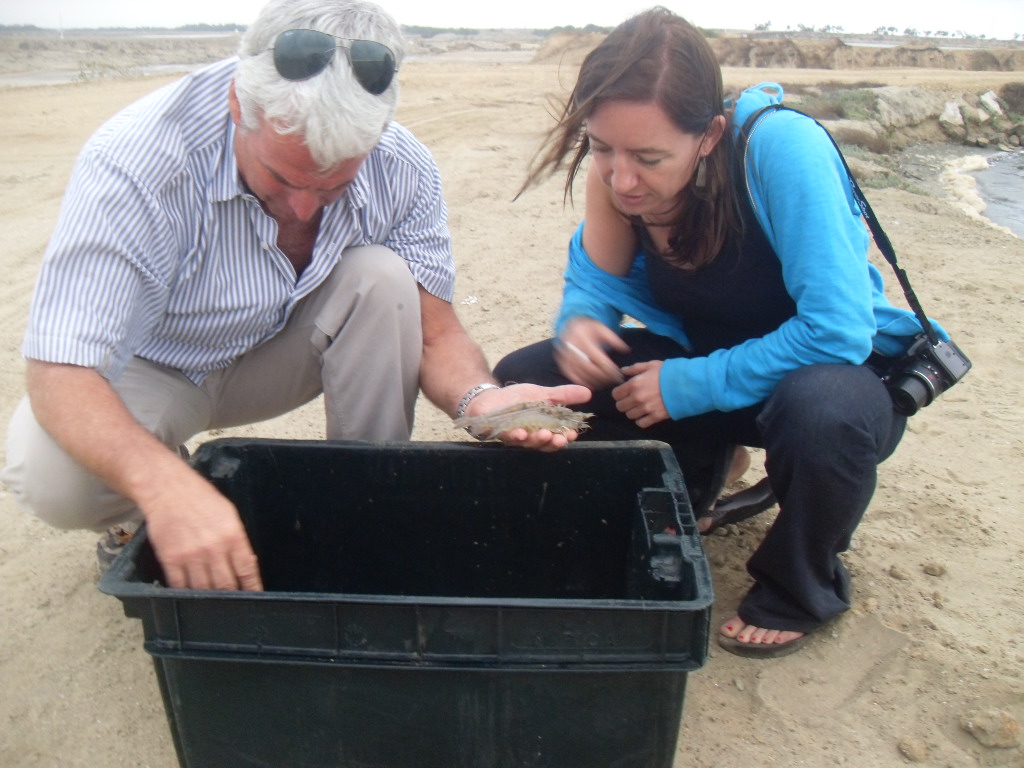Assessing a Farm Against the ASC Standards


It’s a sweltering day in Thailand, and the earthen shrimp ponds in front of me appear surprisingly calm, given the large volume of shrimp they contain. I am assessing this farm for an Aquaculture Stewardship Council (ASC) pre-assessment as part of my job as a Lead Auditor for the Conformity Assessment Body (CAB), SCS Global Services (SCS). I look on as the farm manager checks the dissolved oxygen reading and smiles. The device tells us that the dissolved oxygen in the pond is well within levels necessary to maintain a healthy crop.
In the main office, I ask to see the records for water quality monitoring and feed use. I randomly sample a set of months from the past year, and I notice that readings in May showed two days with dissolved oxygen below the limits of the ASC standard. In some cases, this dip in dissolved oxygen would be of concern and could even mean that the shrimp farm would not be eligible to earn ASC certification without a major overhaul of its operations. However, today I am not worried. The record shows unusually hot temperatures in the Surat Thani province on those days, and one of the farm’s aerators had been broken. The farm had replaced its aerator the following day, and dissolved oxygen levels rose to a safe threshold. I record the dissolved oxygen issue as an ‘Observation’ rather than as a non-conformity triggering a Corrective Action Request (CAR). Much to the farm manager’s relief, I tell him that isolated incidents such as this do not prohibit ASC certification; the farm has systems in place that assure that water quality is maintained.
Checking documented procedures in the field
Auditing seafood farms of all different species around the globe, I have learned to look for systemic problems, rather than one-off errors, although both need to be examined. If I see that a shrimp pond was not well designed and that dissolved oxygen levels are regularly low, this would lead to a Major CAR and a barrier to achieving ASC certification until the problem is adequately addressed.
However, I am rarely surprised by what I observe at farms during onsite audits since the purpose of the visit is to confirm that documented procedures are actually implemented in the field. Much of the assessment work occurs off-site during the project scoping and desk review phases. I review the farm’s documentation thoroughly beforehand, which allows me to make efficient use of staff time and minimize any intrusion on farm operations. I may conduct staff interviews away from management to ensure that I’ve received original records, and do ask staff to confirm that what I’m seeing represents standard operations. Most onsite audits last only a few days, out of an assessment process that can take several weeks of work over a period of months.
More to it than meets the eye
One of the most common questions I get from seafood farmers is: “Why do assessments take so long, and why are they so expensive?” Understandable, particularly for someone who only interacts with auditors during a short onsite visit! However, there is a lot more than meets the eye. No two assessments are exactly alike since aquaculture farms use a variety of production techniques. The ASC standards vary by species, and any given standard might contain between 50 and 150 performance measures called ‘Indicators’, each with multiple compliance criteria, which I have to assess in the field.
"No two assessments are exactly alike since aquaculture farms use a variety of production techniques."
In addition to time spent on individual project scoping and document review, all CABs are audited themselves by an outside accreditor; in ASC’s case, the accreditation body is Accreditation Services International (ASI). ASI audits our procedures to confirm that we train our staff properly, evaluate clients true to the standards, and remain impartial. SCS tracks all client interactions, project findings and training materials in order to leave a transparent paper trail for ASI. This all takes time and effort that is often invisible to clients.
Cutting-edge sustainability practices becoming mainstream
So what’s in it for me, you might ask? One of the most fulfilling parts of this job is meeting seafood producers and developing a deep understanding of evolving sustainability practices. I helped develop the original ASC shrimp standard, and as the industry learns and as social norms change, formerly cutting-edge sustainability practices are becoming mainstream. Farms and feed companies are coming up with new ways to operate even more efficiently while reducing negative environmental impacts.
"Farms and feed companies are coming up with new ways to operate even more efficiently while reducing negative environmental impacts."
It’s important to remember that while small-scale aquaculture has been practiced for thousands of years, particularly in Asia, commercial farming of seafood is a recent phenomenon. Producers are still learning, and practices are evolving rapidly. Shrimp farming in the 1980s was marked by mangrove deforestation, destruction of fragile shoreline ecosystems, and use of small pelagic fish as feed. However, operations are changing, and producers seeking ASC certification are on the leading edge. I’m continually inspired by producers, many of whom have strong commitments to steward their lands and I truly enjoy rewarding their innovations through ASC certification.

